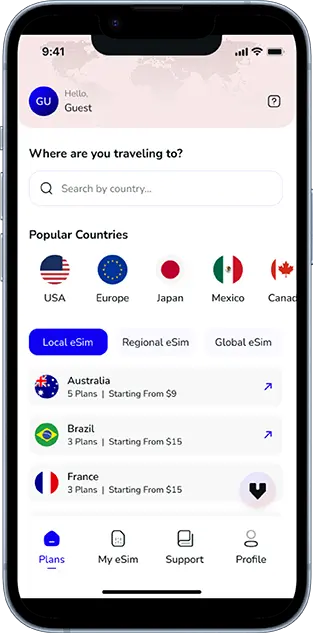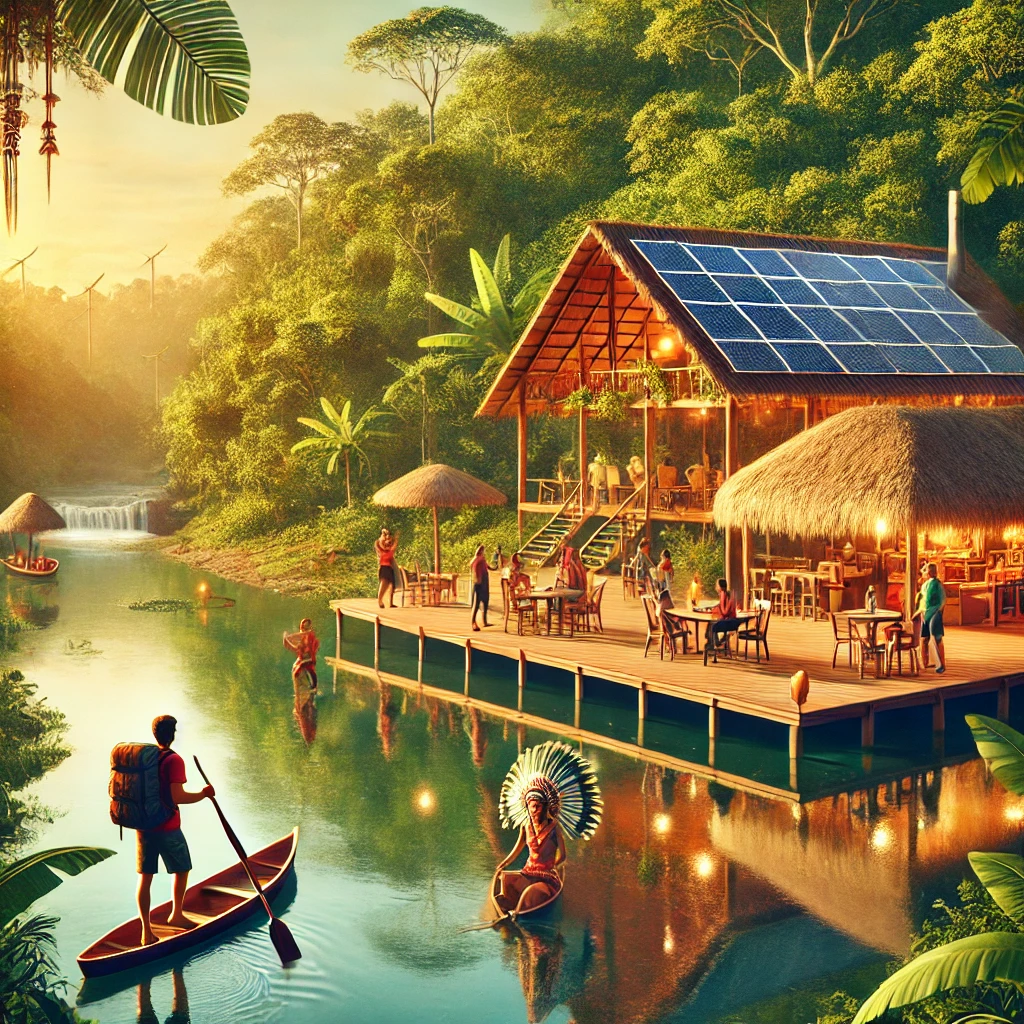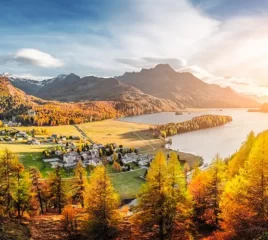Note that iPhone devices from Mainland China aren’t eSIM compatible. Also iPhone devices from Hong Kong and Macao aren’t compatible (except for iPhone 13 Mini, iPhone 12 Mini, iPhone SE 2020 and iPhone XS)
Brazil, with its vast Amazon rainforest, stunning beaches, and vibrant culture, is a top destination for travelers. However, with tourism comes responsibility—protecting the environment, supporting local communities, and preserving cultural heritage. Sustainable tourism ensures that Brazil’s natural and cultural treasures remain intact for future generations. Here’s how you can travel responsibly in Brazil.
Exploring the Principles of Sustainable Tourism in Brazil
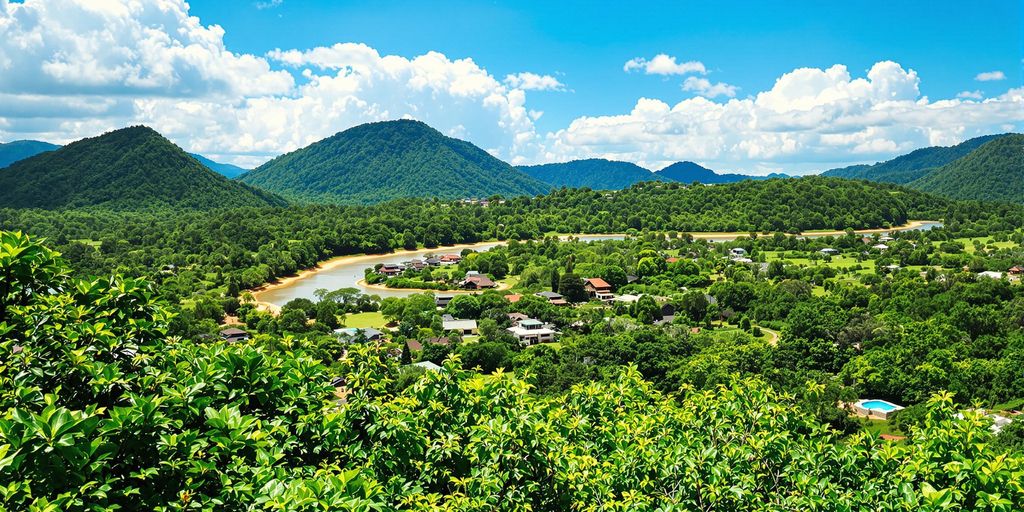
Understanding the Importance of Responsible Travel
Sustainable tourism is more than just a trend—it’s a way to ensure that the places we visit remain vibrant and thriving for generations to come. In Brazil, a country known for its incredible diversity of ecosystems and cultures, traveling responsibly is especially vital. When you make thoughtful travel choices, you’re not only helping protect the environment but also supporting local communities and economies.
Here are a few core principles of responsible travel:
- Minimizing environmental impact: This means reducing waste, conserving water, and choosing eco-friendly accommodations.
- Respecting local cultures: Learn about the traditions and customs of the areas you’re visiting, and engage with them in a meaningful way.
- Supporting local economies: Spend your money at locally-owned businesses, from restaurants to artisan shops.
How Tourism Impacts Brazil’s Ecosystems
Brazil is home to some of the world’s most biodiverse ecosystems, including the Amazon Rainforest, the Pantanal wetlands, and the Atlantic Forest. Tourism can have both positive and negative effects on these areas. On the one hand, it brings much-needed funds for conservation projects and raises awareness about the importance of protecting these habitats. On the other hand, poorly managed tourism can lead to deforestation, pollution, and habitat destruction.
To travel sustainably, consider:
- Visiting eco-tourism destinations that prioritize conservation.
- Avoiding activities that exploit wildlife or damage natural habitats.
- Learning about the environmental challenges facing the regions you’re visiting.
Balancing Tourism and Cultural Preservation
Brazil’s cultural richness is as impressive as its natural beauty. From indigenous traditions to Afro-Brazilian heritage, the country is a tapestry of diverse communities and histories. However, tourism can sometimes lead to the commercialization or even loss of cultural traditions.
To ensure your travels contribute positively:
- Engage with local communities: Participate in workshops, festivals, or guided tours led by locals.
- Be mindful of your behavior: Always ask for permission before taking photos of people or sacred sites.
- Choose authentic experiences: Seek out opportunities to learn directly from the people who call these places home.
By understanding these principles, you can make your trip to Brazil not only memorable but also meaningful for the people and places you encounter.
Community-Based Tourism: A Path to Sustainability
What Is Community-Based Tourism?
Community-based tourism (CBT) is a travel approach where local communities play a central role in hosting tourists. It’s not just about visiting a destination; it’s about connecting with the people who live there. In CBT, the community is actively involved in planning and managing tourism activities, ensuring that the benefits—economic, social, and cultural—stay within the community. This type of tourism allows visitors to experience a more authentic side of a destination while supporting local livelihoods. For example, travelers might stay in family-run guesthouses, join guided tours led by locals, or participate in traditional activities like craft-making or farming.
Examples of Successful Community Projects in Brazil
Brazil is home to several inspiring community-based tourism initiatives. Here are a few examples:
- Reserva Extrativista Tapajós-Arapiuns: Located in the Amazon, this community-led project offers eco-tourism experiences like forest hikes and canoe trips while educating visitors about conservation efforts.
- Quilombola Communities: Descendants of escaped African slaves, these communities invite travelers to learn about their history, culture, and sustainable practices through workshops and cultural events.
- Praia do Forte: A coastal village that combines eco-tourism with community involvement, offering activities such as sea turtle conservation tours and local culinary experiences.
These projects not only provide unique experiences for travelers but also empower local communities to preserve their traditions and natural surroundings.
How to Support Local Communities as a Traveler
If you want to make a positive impact while traveling, here are some simple ways to support local communities:
- Choose locally-owned accommodations and restaurants: Staying at a family-run inn or dining at a local eatery keeps money within the community.
- Hire local guides: Opt for tours led by residents who can share personal insights and stories about the area.
- Buy handmade goods: Instead of mass-produced souvenirs, purchase crafts or products made by local artisans.
- Respect cultural norms: Learn about local customs and traditions before your visit to ensure your behavior is respectful.
- Ask questions: Show genuine interest in the community’s way of life—it’s a small gesture that can make a big difference.
By participating in community-based tourism, you’re not just visiting a place; you’re contributing to its sustainability and helping its people thrive.
Stay Connected, Travel Green!
Get a Brazil eSIM for hassle-free connectivity while reducing plastic waste.
The Role of Indigenous Tourism in Brazil’s Sustainability
Learning from Brazil’s Indigenous Communities
Brazil is home to a rich tapestry of indigenous cultures, with over 300 ethnic groups spread throughout the country. These communities hold invaluable knowledge about the land, its ecosystems, and sustainable living practices that have been passed down through generations. By engaging with indigenous tourism, visitors have the chance to learn directly from these guardians of Brazil’s natural and cultural heritage. For example, the Guaraní people offer insights into their spiritual connection to nature, while the Quilombola community shares their history and traditional crafts. These experiences not only educate travelers but also ensure that indigenous voices are heard and respected.
Ethical Guidelines for Indigenous Tourism
When visiting indigenous communities, it’s crucial to approach the experience with respect and sensitivity. Here are a few guidelines to keep in mind:
- Seek Permission: Always ensure that your visit is welcomed and organized in collaboration with the community.
- Support Fair Compensation: Make sure your contributions directly benefit the people you’re visiting, whether through locally-run tours or purchasing handmade goods.
- Respect Traditions: Follow cultural norms, such as dress codes or photography restrictions, to show your appreciation for their way of life.
By adhering to these practices, travelers can create meaningful connections while supporting the sustainability of these communities.
Cultural Immersion Through Responsible Practices
Immersing yourself in indigenous cultures goes beyond just observing; it’s about participating in a way that honors their traditions. Activities like learning traditional dances, trying local cuisine, or joining in on craft-making workshops allow for a deeper understanding of their lifestyle. Some communities even offer eco-lodging, where visitors can stay in accommodations built using sustainable methods. These immersive experiences not only enrich the traveler’s journey but also provide a source of income that helps preserve indigenous cultures and their environment.
Eco-Friendly Accommodations in Brazil
Choosing Sustainable Lodging Options
When planning a trip to Brazil, choosing eco-friendly accommodations can make a big difference. Many hotels and lodges in the country are committed to sustainability, using renewable energy sources, reducing waste, and supporting local communities. Look for places that:
- Use solar power or other renewable energy sources.
- Have water-saving systems, like rainwater collection.
- Support local employment and community projects.
Spotlight on Eco-Lodges in the Amazon
One standout option is the Uakari Lodge, located in the Mamirauá Sustainable Development Reserve in the Amazon. This floating lodge is run by the local community and is built with sustainability in mind—it uses solar power, and recycled materials, and even collects rainwater. Staying here isn’t just about comfort; it’s a chance to experience the Amazon’s unique ecosystem while supporting conservation and local livelihoods. Activities like guided hikes, dolphin watching, and village visits are also available.
How Green Certifications Help Travelers Make Better Choices
Green certifications can be a helpful guide when picking eco-friendly accommodations. Look for certifications that indicate a commitment to sustainability, such as:
- Energy efficiency and renewable energy use.
- Waste management and recycling programs.
- Community involvement and fair labor practices.
These certifications can give you peace of mind that your stay is contributing positively to the environment and local communities.
Reducing Your Environmental Footprint While Traveling in Brazil
Tips for Minimizing Waste During Your Trip
Traveling responsibly starts with waste management. In Brazil, where stunning beaches and lush forests abound, it’s crucial to leave nature as you found it. Here are a few practical steps:
- Always carry a reusable water bottle. Avoid buying plastic bottles, especially since many public places and airports now have drinking fountains.
- Bring reusable cloth bags for shopping or carrying items. Grocery stores in Brazil often overuse plastic bags, so having your own is a simple way to cut down on waste.
- Take your trash with you. Whether you’re hiking in a national park or relaxing on a beach, make sure to dispose of your waste properly or carry it back to designated bins. This preserves the beauty of these spots for others.
Sustainable Transportation Options in Brazil
Getting around in Brazil can be eco-friendly if you plan ahead. Here are some ideas:
- Use public transportation, like buses or metro systems, in cities like Rio de Janeiro or São Paulo. It’s cheaper and reduces carbon emissions compared to taxis or ride-shares.
- Rent a bike or join cycling tours. Many cities, including Rio, have dedicated bike paths and trails, making this a fun and sustainable way to explore.
- If you’re renting a car, opt for a fuel-efficient or hybrid vehicle. This is especially helpful for long road trips to Brazil’s more remote areas.
The Importance of Conserving Water and Energy
Brazil faces water shortages in some regions, so being mindful of your usage is a big help. Here’s how you can conserve water and energy during your stay:
- Reuse towels and linens in hotels instead of having them washed daily. Most accommodations have programs supporting this.
- Turn off lights, air conditioning, and electronics when you leave your room. It’s a small gesture but makes a big difference.
- Stay at places with eco-friendly practices, like solar panels or water filtration systems. These options are becoming more common, especially in eco-lodges and sustainable accommodations.
By taking these steps, you’ll not only enjoy your trip to Brazil but also leave a lighter footprint on the environment. Responsible travel isn’t hard—it just takes a little thought and effort.
The Amazon Rainforest: A Model for Ecotourism
Why the Amazon Is Crucial for Global Sustainability
The Amazon Rainforest is often called the “lungs of the Earth” because it produces about 20% of the world’s oxygen. Covering a significant portion of Brazil, it’s not only a biodiversity hotspot but also a key player in regulating the global climate. The rainforest absorbs vast amounts of carbon dioxide, making it a natural defense against climate change. But here’s the catch: deforestation and human activities are threatening its survival. Sustainable tourism can help protect this irreplaceable ecosystem by providing economic incentives for conservation.
Activities That Promote Conservation in the Amazon
Exploring the Amazon doesn’t have to come at the expense of its fragile environment. Here are some activities that travelers can enjoy while supporting conservation efforts:
- Guided Nature Walks: Trek through the rainforest with local guides who share insights about the ecosystem and its unique species. These tours often highlight the importance of preserving the habitat.
- Wildlife Observation: Participate in eco-friendly tours to spot pink river dolphins, sloths, and countless bird species. Responsible operators ensure minimal disturbance to the animals.
- Community Visits: Spend time in local communities to learn about their sustainable practices and how they coexist with the rainforest. These visits often include demonstrations of traditional crafts and cooking.
How to Visit the Amazon Responsibly
Traveling responsibly in the Amazon means making choices that minimize your environmental impact. Here are some tips:
- Choose Eco-Friendly Accommodations: Look for lodges that use solar power, recycle waste, and support local communities. For example, the Uakari Lodge in the Mamirauá Reserve is a great example of sustainable tourism in action.
- Follow Leave-No-Trace Principles: Avoid leaving trash behind and stick to designated trails to protect the delicate ecosystem.
- Support Local Guides and Businesses: Hiring local guides not only enriches your experience but also ensures your money goes directly to the community.
By making thoughtful choices, travelers can enjoy the Amazon’s beauty while contributing to its preservation. Sustainable tourism isn’t just about seeing the world—it’s about protecting it for future generations.
Eco-Friendly Travel Made Easy
Choose a Brazil eSIM for instant activation and zero waste..
Philantourism: Traveling with a Purpose in Brazil
What Is Philantourism and Why It Matters
Philantourism is a blend of philanthropy and tourism, where travelers intentionally visit places that benefit most from their presence. It’s about using your travel choices to make a positive impact on local communities, economies, and environments. In Brazil, this concept is especially relevant. Tourism contributes significantly to the country’s economy, creating millions of jobs and supporting local businesses. By traveling responsibly and spending your money locally, you can help sustain communities and preserve the natural beauty of Brazil for future generations. Whether you’re exploring the Amazon, marveling at Iguazu Falls, or enjoying the vibrant culture of Rio de Janeiro, your choices can make a difference.
Destinations in Brazil That Benefit from Philantourism
Brazil offers numerous destinations where your visit can have a meaningful impact:
- The Amazon Rainforest: By staying at eco-lodges run by local communities, you contribute to conservation efforts and support sustainable livelihoods.
- The Pantanal: Known for its incredible wildlife, this region benefits from eco-tourism initiatives that help protect its delicate ecosystem.
- Favelas in Rio de Janeiro: Opt for tours led by residents, which not only provide authentic insights into community life but also ensure that your money goes directly to those who need it most.
These destinations allow you to experience Brazil’s diversity while supporting its people and environment.
How Your Travel Choices Can Make a Difference
Making a positive impact while traveling in Brazil doesn’t have to be complicated. Here are a few simple ways to practice philantourism:
- Choose Local: Stay in family-run accommodations, eat at local restaurants, and buy souvenirs from artisans. This keeps money circulating within the community.
- Support Community Projects: Look for tours and activities that directly benefit local initiatives, such as conservation programs or cultural preservation efforts.
- Be Mindful of Your Impact: Respect local customs, minimize waste, and choose eco-friendly transportation options when possible.
By making thoughtful decisions, you can enjoy a fulfilling travel experience while contributing to the well-being of Brazil’s communities and ecosystems.
Undertourism: Discovering Brazil’s Hidden Gems
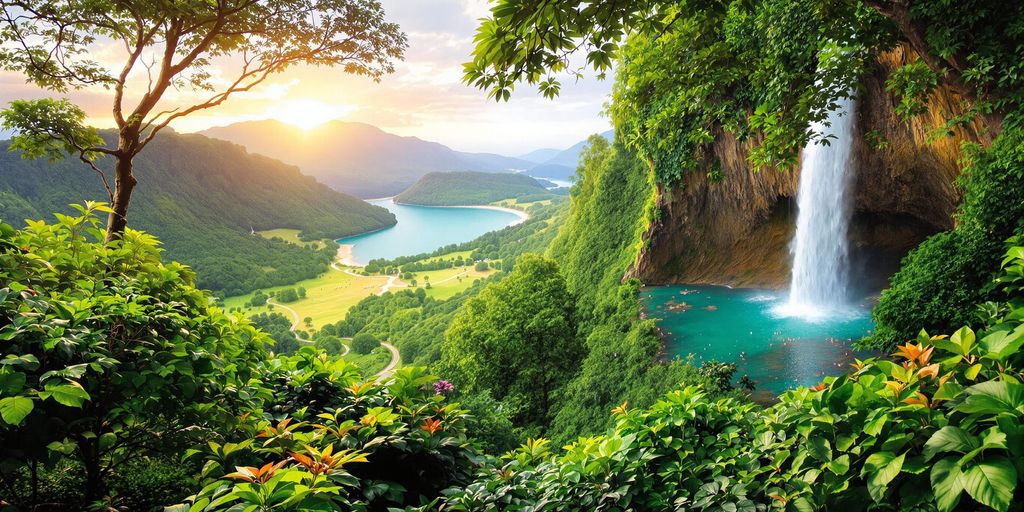
What Is Undertourism and Its Benefits
Undertourism is all about exploring destinations that don’t get as much attention as the usual tourist hotspots. In Brazil, this means skipping the crowded beaches of Copacabana or the packed streets during Rio Carnival and heading to places where you can experience the country’s beauty without the crowds. The benefits? For one, it helps ease the strain on over visited sites. It also gives you a more personal and authentic travel experience. Plus, it spreads tourism income to areas that could use the economic boost. It’s a win-win for both travelers and local communities.
Off-the-Beaten-Path Destinations in Brazil
Brazil is massive, and there’s so much more to see than the obvious landmarks. Here are a few lesser-known spots worth checking out:
- Chapada dos Veadeiros National Park: Located in central Brazil, this park is a haven for hikers and nature lovers. Think waterfalls, unique rock formations, and a sense of peace you won’t find in busier areas.
- Jericoacoara: While it’s gaining popularity, this beach town still feels like a hidden gem. It’s perfect for windsurfing, catching sunsets, and relaxing away from the hustle and bustle.
- Vale do Ribeira: Known for its caves and lush Atlantic Forest, this region is ideal for eco-tourism and learning about Brazil’s biodiversity.
How Undertourism Supports Sustainability
When you choose undertourism, you’re not just avoiding crowds—you’re making a positive impact. Visiting less-touristy areas helps balance the economic benefits of tourism across the country. It also reduces environmental pressure on popular spots that may be struggling to handle large numbers of visitors. By spending your money in smaller towns or rural areas, you support local businesses and help preserve cultural traditions. Undertourism is a simple yet powerful way to travel responsibly while discovering a side of Brazil that most people miss.
Sustainable Dining: Exploring Brazil’s Culinary Heritage
The Rise of Nova Cozinha Brasileira
In Brazil, food is more than just sustenance—it’s a cultural experience. Over the years, the culinary scene has evolved, and one of the most exciting developments has been the rise of “nova cozinha brasileira.” This movement is all about taking traditional Brazilian ingredients and recipes and giving them a modern twist. Think of it as a celebration of the country’s rich biodiversity and culinary heritage. Chefs are now experimenting with indigenous fruits like açaí, cupuaçu, and jabuticaba, as well as native fish and vegetables, to create dishes that are fresh, unique, and distinctly Brazilian. São Paulo, in particular, has become a hotspot for this innovative cuisine, but you can find examples of it in other parts of the country as well. When you dine at these restaurants, you’re not just enjoying a meal—you’re supporting a movement that highlights local traditions and sustainable practices.
How to Support Local Farmers and Producers
One of the best ways to ensure your dining choices are sustainable is by supporting local farmers and producers. Brazil is home to a wide variety of small-scale farms that grow everything from coffee and cacao to tropical fruits and vegetables. By choosing restaurants that source their ingredients locally, you’re helping to reduce the carbon footprint associated with transporting food over long distances. Farmers’ markets are another great way to connect with local producers. Not only can you buy fresh, seasonal produce, but you’ll also get a glimpse into the agricultural traditions that sustain many rural communities. Keep an eye out for organic certifications or ask vendors about their farming practices. Every purchase you make is a vote for sustainable agriculture.
Tips for Reducing Food Waste While Traveling
Food waste is a global issue, and travelers can play a role in minimizing it. Here are a few tips to keep in mind while exploring Brazil’s culinary scene:
- Order Smart: Brazilian portions can be generous, so consider sharing dishes or ordering smaller portions if available.
- Embrace Leftovers: Many restaurants are happy to pack up leftovers for you to take away. This way, you can enjoy your meal later and avoid wasting food.
- Choose Buffets Wisely: Brazil is famous for its buffet-style dining, especially at churrascarias. While it’s tempting to pile your plate high, take only what you can eat to avoid unnecessary waste.
By being mindful of your food choices and habits, you can enjoy Brazil’s incredible culinary offerings while contributing to a more sustainable world.
Practical Tips for Responsible Travel in Brazil
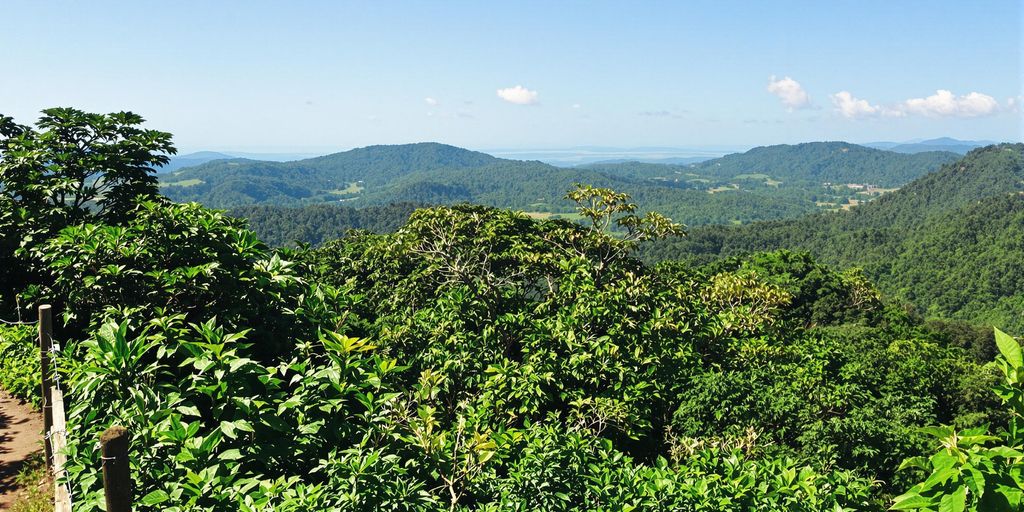
Researching Your Destination Before You Go
Before packing your bags for Brazil, take some time to really understand where you’re headed. Brazil is massive and diverse, so knowing the customs, weather, and local etiquette of your destination can make a big difference. For instance, if you’re visiting the Amazon, you’ll want to learn about its unique ecosystems and the best times to go. Heading to Rio? Brush up on safety tips and how to navigate the bustling city. Researching also helps you avoid tourist traps and lets you focus on authentic experiences. Dive into local history, too—it’ll give you a richer appreciation for what you’re about to see.
Respecting Local Customs and Traditions
Brazil is a cultural melting pot, and respecting its traditions is key to being a responsible traveler. Whether it’s learning a few phrases in Portuguese or understanding the significance of local festivals, small efforts go a long way. For example, during Carnival, be mindful of personal space and avoid cultural appropriation when dressing up. In Indigenous areas, always ask for permission before taking photos or participating in activities. A little respect can open doors to meaningful connections and experiences.
Packing Essentials for a Sustainable Trip
Packing smart isn’t just about convenience—it’s about sustainability, too. Here are a few essentials to consider:
- Reusable Items: Bring a water bottle, utensils, and shopping bags to cut down on single-use plastics.
- Eco-Friendly Toiletries: Opt for biodegradable soaps and shampoos. Solid bars are a great space-saving option.
- Lightweight Clothing: Pack versatile, quick-drying clothes suitable for Brazil’s tropical climate. This reduces laundry needs and energy use.
- Tech Gadgets: Don’t forget portable chargers or an eSIM for staying connected.
By packing thoughtfully, you’re not just making your trip easier—you’re also reducing your environmental impact.
The Economic Impact of Sustainable Tourism in Brazil
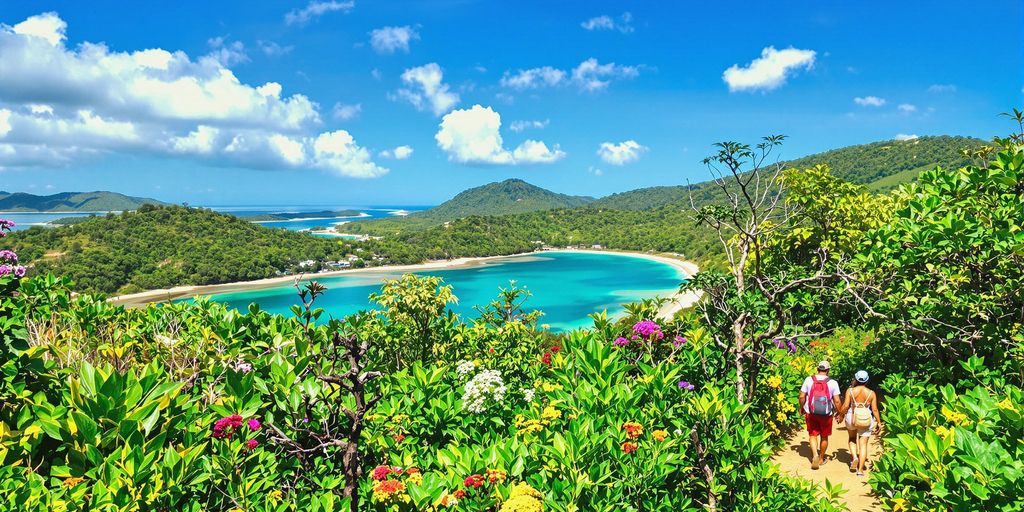
How Tourism Supports Brazil’s Economy
Tourism is a significant part of Brazil’s economy, contributing to jobs and GDP in a big way. In 2019, the sector provided over 2.2 million direct jobs, from hotel staff to tour guides. By 2021, tourism made up around 6.4% of the country’s GDP. While these numbers are impressive, sustainable tourism takes this economic impact a step further. It ensures that the money spent by travelers stays within local communities, helping small businesses thrive. This kind of tourism doesn’t just boost the economy—it makes sure the benefits reach the people who need it most.
The Role of Local Businesses in Sustainable Tourism
Local businesses are the backbone of sustainable tourism in Brazil. From family-owned lodges in the Amazon to small craft shops in coastal towns, these businesses provide authentic experiences while keeping profits local. When travelers choose to eat at a neighborhood café or book a tour with a community-run group, they’re directly supporting the livelihoods of local families. It’s not just about spending money; it’s about making sure that money circulates within the community, creating a ripple effect of economic benefits.
Why Spending Locally Matters
When you spend locally, your travel dollars have a much bigger impact. Here’s why:
- Job Creation: Local spending helps create and sustain jobs within the community.
- Cultural Preservation: Supporting local artisans and performers helps keep traditions alive.
- Environmental Benefits: Locally sourced goods and services often have a smaller carbon footprint compared to imported alternatives.
So, next time you’re in Brazil, think about where your money is going. Every purchase—whether it’s a handmade souvenir or a meal at a local restaurant—can make a difference. Sustainable tourism isn’t just about protecting the environment; it’s also about uplifting communities and ensuring a brighter economic future for everyone involved.
Explore Brazil Sustainably
Stay online abroad with instant activation.
The Future of Sustainable Tourism in Brazil
Emerging Trends in Responsible Travel
The future of tourism in Brazil is leaning heavily towards sustainability, with several exciting trends taking shape. For one, there’s a growing interest in “undertourism,” which encourages travelers to explore less-visited destinations rather than overcrowded hotspots. This not only eases the strain on popular areas but also spreads economic benefits to smaller communities. Another trend is the rise of “philantourism,” a combination of philanthropy and tourism. Travelers are seeking ways to give back, whether by supporting conservation projects or contributing to local economies simply by spending their money wisely. Lastly, technology is playing a bigger role, with apps and platforms making it easier to find eco-friendly accommodations and activities.
Challenges Facing Sustainable Tourism
While the future looks promising, there are definitely hurdles to overcome. One major issue is balancing the economic benefits of tourism with its environmental and social impacts. For instance, while tourism brings jobs and income, it can also lead to habitat destruction and cultural erosion if not managed carefully. Another challenge is educating both travelers and local stakeholders about sustainable practices. Many people still don’t fully understand how their actions—like excessive water use or littering—can harm the environment. Finally, there’s the need for better infrastructure in remote areas. Without proper waste management and transportation systems, even well-intentioned tourism can leave a negative footprint.
How Travelers Can Advocate for Positive Change
If you’re planning a trip to Brazil, there are plenty of ways you can support sustainable tourism. First, consider staying at eco-lodges or community-run accommodations, like the Uakari Lodge in the Amazon. These places not only minimize environmental impact but also directly benefit local communities. Second, educate yourself about the destinations you visit. Learn about the culture, history, and environmental challenges of the area so that you can make informed choices. Finally, think about the little things—carry a reusable water bottle, avoid single-use plastics, and respect local customs. Small actions can add up to make a big difference.
Conclusion
Traveling sustainably in Brazil isn’t just about protecting the environment—it’s about embracing a way of exploring that respects the people, culture, and natural beauty of the country. By making thoughtful choices, like supporting local businesses, reducing waste, and learning about the communities you visit, you can leave a positive impact while enjoying a richer travel experience. Brazil’s incredible landscapes and vibrant traditions deserve to be cherished, and with a little effort, you can help ensure they remain for generations to come. So, pack your bags, stay curious, and remember that responsible travel is a journey worth taking.
Seamless Mobile Data Everywhere
